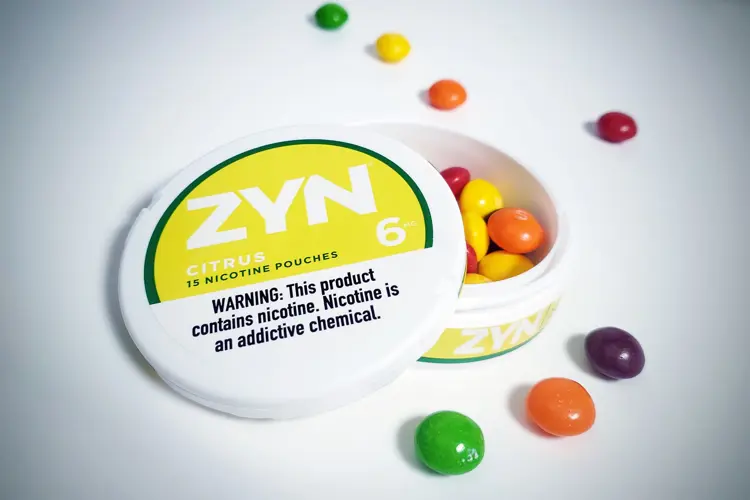Vaping health studies
Fact: there are at least a dozen new studies on vaping and nicotine published every week. That's not an exaggeration. Many of them are about vaping and health. They range from medical studies on vaping health risks to analysis of e-liquid or vapor constituents to research on vaping and nicotine addiction. Some are released with a lot of fanfare, and create a huge media stir—often based on alarming claims made by the researchers, or by the university press office, or even by outside groups.
No vaping research concludes that vaping is “safe.” Anytime you inhale a foreign substance or use a drug like nicotine, there is some risk built into the activity. The scientific consensus is that vaping is, by and large, far safer than smoking cigarettes. But beyond a general agreement that vaping poses fewer risks than smoking, opinions on the possible health and side effects of vaping vary widely.
The studies listed below are a sample of some of the most important ones published in recent years, but by no means an exhaustive list of research. The fastest way to find other important research is to look at the references in the large evidence reviews in the final section of this article.
How does vaping affect heart, lung, and circulatory health?
There is no true long-term vaping research—because the products haven't been around long enough, but also because most vapers previously smoked cigarettes, and it's probably impossible to separate the effects caused by years of smoking from any health problems potentially caused by vaping. That’s what makes this 2017 vape study unique. It tracked health markers for 3.5 years in a group of vapers who had never smoked.
The researchers carefully measured indicators of heart, lung, and circulatory health, and compared them to the same markers in a control group of non-vapers who had also never smoked. The findings were uniformly positive. The vapers’ health markers were no worse than the non-smokers’—even among those who vaped the most.
“Although it cannot be excluded that some harm may occur at later stages, this study did not demonstrate any health concerns associated with long-term use of [e-cigarettes] in relatively young users who did not also smoke tobacco,” wrote the authors.
Health impact of E-cigarettes: a prospective 3.5-year study of regular daily users who have never smoked. Nature Scientific Reports. 2018. Riccardo Polosa, Fabio Cibella, Pasquale Caponnetto, Marilena Maglia, Umberto Prosperini, Cristina Russo, Donald Tashkin.
Which flavors are preferred by adult vapers?
Two papers published in 2018 confirm that adult vapers prefer sweet and fruity flavors to the tobacco flavors that most non-vapers assume ex-smokers would like.
The flavor study led by Christopher Russell used data from a 2016 survey of almost 21,000 frequent American vapers to show that fruit and dessert flavors were by far the most popular among all kinds of vapers—even so-called “dual-users” (smokers who also vape).
The other paper (by Farsalinos and colleagues) describes the largest-ever survey of American vapers’ flavor preferences. More than 69,000 adult vapers participated. The survey showed that more than 80 percent of current, former and never smokers who vape preferred fruit or dessert/pastry/bakery flavors. And among the vapers who have completely quit smoking, just 7.7 percent prefer to vape tobacco flavors.
Changing patterns of first e-cigarette flavor used and current flavors used by 20,836 adult frequent e-cigarette users in the USA. Harm Reduction Journal. 2018. Christopher Russell, Neil McKeganey, Tiffany Dickson, Mitchell Nides.
Patterns of flavored e-cigarette use among adult vapers in the United States: an internet survey. Submitted to Food and Drug Administration Docket No. FDA-2017-N-6565. 2018. Konstantinos Farsalinos, Christopher Russell, George Lagoumintzis, Konstantinos Poulas.
Can vaping help smokers quit cigarettes?
It’s often claimed that vaping doesn't help smokers quit, or even that vaping impedes smoking cessation. However, population studies and a high-quality randomized controlled trial (RCT) of e-cigarettes as a smoking cessation tool indicate otherwise. Vaping seems to be a viable and popular way to reduce or quit cigarette smoking.
The 2017 study used U.S. Census data to show that vaping helps more smokers try to quit, and that smokers who vape succeed at quitting more often.
“Use of e-cigarettes was associated both with a higher quit rate for individuals as well as at the population level; driving an increase in the overall number of people quitting,” said lead author Shu-Hong Zhu.
The 2019 publication describes a one-year trial comparing smokers expressing a desire to quit who were randomly assigned to either e-cigarettes or nicotine replacement therapy. After a year, 18 percent of the vaping group was abstinent from cigarettes—almost twice as many as the smokers who used pharmaceutical nicotine products (9.9 percent).
“The figure may sound low,” said the study leader Prof. Peter Hajek, “but…if they were quitting on their own, the quit rate would be about 3 percent.”
E-cigarette use and associated changes in population smoking cessation: evidence from US current population surveys. BMJ. 2017. Shu-Hong Zhu, Yue-Lin Zhuang, Shiushing Wong, Sharon E Cummins, Gary J Tedeschi.
A Randomized Trial of E-Cigarettes versus Nicotine-Replacement Therapy. New England Journal of Medicine. 2019. Peter Hajek, Anna Phillips-Waller, Dunja Przulj, Francesca Pesola, Katie Myers Smith, Natalie Bisal, et al.
Are there dangerous levels of formaldehyde?
A 2015 research letter to the New England Journal of Medicine caused an uproar when its Portland State University authors claimed that e-cigarettes emitted dangerous levels of the carcinogen formaldehyde. The study was immediately challenged for using primitive vaping equipment at unreasonably high voltage levels, thus producing vapor that no user would be able to tolerate.
The Portland State formaldehyde study has been debunked multiple times, most notably in a 2017 replication study that describes in detail how the original researchers used smoking machines to produce “dry puffs,” which are so unpleasant that no vaper would repeatedly inhale them.
“In fact, such testing of e-cigarettes is not very different from overcooking food to the point of becoming an inedible piece of charcoal and then assuming that consumers would consume it and be exposed to the resulting carcinogenic compounds in their daily routine,” wrote lead author Konstantinos Farsalinos. “Accepting that e-cigarettes are less harmful than smoking, such an omission could result in unintendedly misleading smokers into thinking that there is little to be gained by switching to e-cigarettes.”
E-cigarettes emit very high formaldehyde levels only in conditions that are aversive to users: A replication study under verified realistic use conditions. Food and Chemical Toxicology. 2017. Konstantinos E. Farsalinos, Vassilis Voudris, Alketa Spyrou, Konstantinos Poulas.
Is vaping a gateway to teenage smoking?
Many e-cigarette skeptics worry that vaping might lead naive adolescent users to smoking cigarettes, undoing decades of progress in reducing smoking uptake among teens. But that hasn't happened—at least not at a population level. In fact, since the advent of vaping, teen smoking has fallen rapidly to its lowest level ever. Just 4.2 percent of 12th graders smoked in 2017, according to the CDC. Compare that to 24.6 percent in 1997.
A 2017 paper by two tobacco control leaders suggests that not only is vaping not leading to increased teen smoking, it may be serving as a gateway in the opposite direction, leading impressionable potential smokers away from combustible cigarettes.
“While research exists to support either side of the argument, we conclude, currently, that youth use of e-cigarettes is unlikely to increase the ranks of future cigarette smokers,” wrote the authors. “Is it possible we could have our cake and eat it too? Perhaps, especially if sensible comprehensive harm reduction policies can earn a place in modern tobacco control efforts.”
Adolescents and e-cigarettes: Objects of concern may appear larger than they are. Drug and Alcohol Dependence. 2017. Lynn Kozlowski and Kenneth Warner.
Can vaping help reverse COPD in smokers?
Smoking is the largest single cause of chronic obstructive pulmonary disease (COPD), and unfortunately, many smokers with the condition remain unable to quit cigarettes, even after their diagnosis. This three-year study showed that a group of COPD patients who smoked could reverse some of the harm caused by the disease by switching to e-cigarettes. The smokers who switched to vapor products showed improved overall health, and some COPD effects (like respiratory infections) were reduced.
“Quitting smoking is a key strategy not only to prevent the onset of COPD but also to stop its progression to more severe disease stages,” said lead author Riccardo Polosa. “Given that many COPD patients continue smoking despite their symptoms, the electronic cigarette could be an effective and safe alternative to the tobacco cigarettes also in this vulnerable population."
Health effects in COPD smokers who switch to electronic cigarettes: a retrospective-prospective 3-year follow-up. International Journal of Chronic Obstructive Pulmonary Disease. 2018. Riccardo Polosa, Jaymin Bhagwanji Morjaria, Umberto Prosperini, Cristina Russo, Alfio Pennisi, Rosario Puleo, Massimo Caruso, Pasquale Caponnetto.
Comprehensive reviews of vape research
There are several large reports that comprehensively review the existing science on vaping and weigh the overall risks and benefits for e-cigarette users. The three best-known are listed below. The two British reviews come to more optimistic conclusions than the American one, but all three conclude that vaping poses far less risk than smoking.
- National Academies of Sciences, Engineering and Medicine: Public Health Consequences of E-Cigarettes (2018)
- Public Health England: E-cigarettes and heated tobacco products: evidence review (2018)
- Royal College of Physicians: Nicotine without smoke: Tobacco harm reduction (2016)
These big reviews are indexed, so you can easily find the topic you’re interested in. Then you can either read the bullet points or take a deep dive into the subject matter.
President Trump promised during his election campaign to “save vaping," but his administration has undermined that goal at every turn.
The U.S. disposable vape market has grown to $2 billion in annual sales, although nearly none of the products are authorized by the FDA.
More than 30 bills that would impose severe restrictions vaping consumers’ product choices remain active in U.S. state legislatures.
The Freemax REXA PRO and REXA SMART are highly advanced pod vapes, offering seemingly endless features, beautiful touchscreens, and new DUOMAX pods.
The OXVA XLIM Pro 2 DNA is powered by a custom-made Evolv DNA chipset, offering a Replay function and dry hit protection. Read our review to find out more.
The SKE Bar is a 2 mL replaceable pod vape with a 500 mAh battery, a 1.2-ohm mesh coil, and 35 flavors to choose from in 2% nicotine.



















